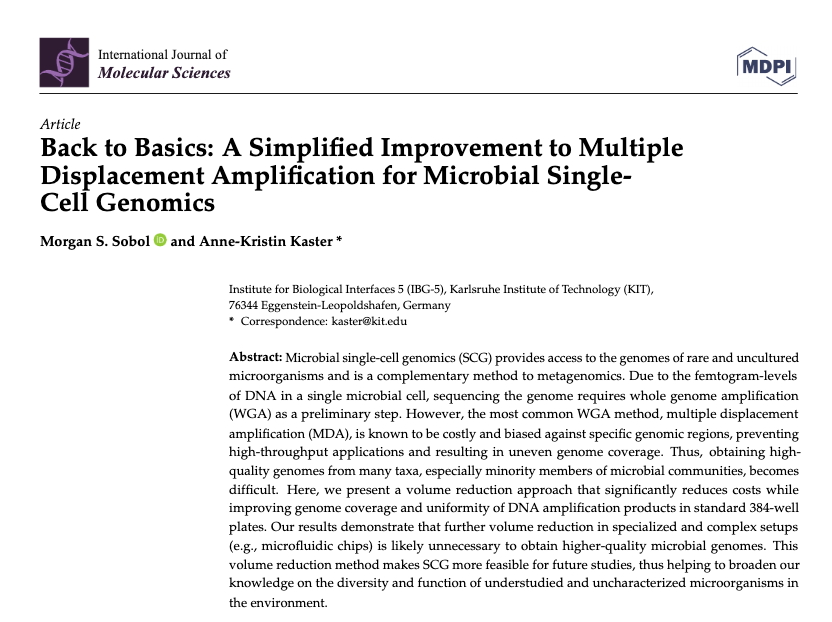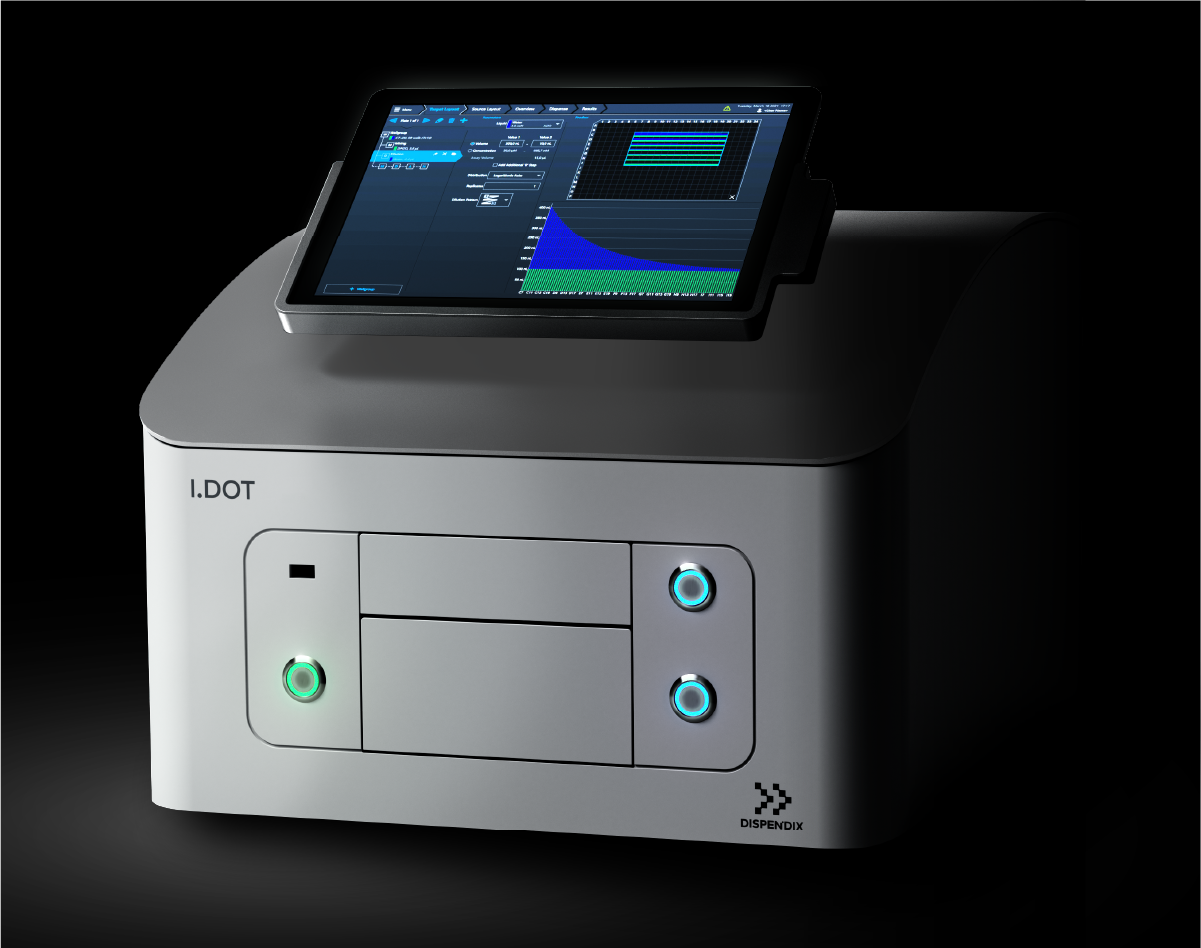The vast majority of microorganisms (i.e., microbes) remain understudied due to the inability to cultivate them in a lab setting, resulting in a lack of knowledge about their genomes, metabolic potential, and environmental roles. These microbes are collectively referred to as microbial dark matter (MDM).
MDM holds the potential for novel solutions in sustainable energy, bioremediation, and combating antibiotic resistance. Metagenomics, a culture-independent approach, has significantly advanced our understanding of MDM, but struggles to accurately assemble individual genomes due to strain variations and misattribution of sequences. Additionally, repetitive sequences and mobile genetic elements are often not accurately assembled or attributed to their host organisms, obscuring insights into evolutionary mechanisms like horizontal gene transfer. Single-cell genomics (SCG) emerged as a complementary tool to analyze individual cells, expanding our knowledge of MDM taxa.
Microbial SCG is a powerful tool for studying rare and uncultured microorganisms. However, the low amount of DNA in a single microbial cell makes it challenging to sequence the genome. The most common WGA method, MDA, is expensive and can introduce biases in the genome coverage. This study, Back to Basics: A Simplified Improvement to Multiple Displacement Amplification for Microbial Single-Cell Genomics by researchers from the University of Wisconsin-Madison and the Karlsruhe Institute of Technology, presents a volume reduction approach that significantly reduces costs and improves genome coverage in standard 384-well plates.

Figure 1. The paper Back to Basics: A Simplified Improvement to Multiple Displacement Amplification for Microbial Single-Cell Genomics (SCG) in the publication International Journal of Molecular Sciences.
Cell Lysis & Multiple Displacement Amplification (MDA)
A microbial single-cell genomics (SCG) workflow typically encompasses the following steps:
- Sample collection and preservation to ensure the integrity of microbial cells
- Specific or non-specific cell staining to differentiate and identify target cells
- Cell sorting to isolate individual cells of interest
- Cell lysis to extract the genomic DNA from each cell
- Whole-genome amplification (WGA) to generate sufficient DNA material for sequencing
- Genome sequencing and analysis to determine the complete genetic makeup of each individual cell
The researchers used the benefits of the I.DOT Liquid Handler in the critical cell lysis and multiple displacement amplification (MDA) (i.e., the most common version of WGA) steps of their workflow (Fig. 2). Plates containing sorted E. coli cells were thawed and centrifuged. A modified lysis buffer from Stepanauskas et al. (2017) was used, as the REPLI-g Single Cell Kit (QIAGEN) lysis buffer was too destructive for E. coli single cells. Lysis buffer and neutralization buffer were treated with UV on an ice bath in a 254 nm shortwave ultraviolet crosslinker.
The lysis solution was then dispensed onto the cells and into wells containing no cells (negative controls) with an I.DOT Non-Contact Dispenser (DISPENDIX) (Table 1). The plate was incubated and neutralized by the addition of an equal volume of neutralization buffer.
.png?width=1920&height=1080&name=Unlocking%20the%20Secrets%20of%20Uncultured%20Microbes%20%26%20the%20I.DOT%20(International%20Journal%20of%20Molecular%20Sciences).png)
Figure 2. Sobol & Kaster's (2023) cell lysis and multiple displacement amplification (MDA) workflow, which included the use of the I.DOT Liquid Handler (DISPENDIX) across both steps.
Multiple displacement amplification (MDA) was performed with the REPLI-g Single Cell Kit (QIAGEN). REPLI-g sc Reaction Buffer and Polymerase were combined in PCR tubes and UV treated on an ice bath in a 254 nm shortwave ultraviolet crosslinker. Syto-13 (Invitrogen) was added to the master mix to monitor exponential DNA amplification.
The REPLI-g master mix was then dispensed onto the lysed cells and negative controls with an I.DOT Non-Contact Dispenser (DISPENDIX) so that the final MDA volumes were 0.5, 0.8, 1.0, 1.25, 5, and 10 µL (Table 1). The MDAs were incubated in a CFX-384 thermocycler.
Table 1. MDA reagents by reaction volume.
%20table%202.png?width=776&height=180&name=Unlocking%20the%20Secrets%20of%20Uncultured%20Microbes%20%26%20the%20I.DOT%20(International%20Journal%20of%20Molecular%20Sciences)%20table%202.png)
Sobol & Kaster's (2023) method makes SCG more financially feasible for future studies and for other microbe researchers, as the degree of miniaturization leads to a significant reduction of WGA's high costs (Table 2).
Table 2. Method characteristics of microbial single-cell genome amplification methods. MDA, multiple displacement amplification; WGA-X, whole genome amplification—X; PTA, primary template-directed amplification; MALBAC, multiple annealing and looping based amplification cycles.
%20table.png?width=773&height=273&name=Unlocking%20the%20Secrets%20of%20Uncultured%20Microbes%20%26%20the%20I.DOT%20(International%20Journal%20of%20Molecular%20Sciences)%20table.png)
*Reaction volumes include sorting, lysis, and neutralization buffer volumes, as well as WGA reagents and/or fluorescent dyes to monitor the reaction recommended by the manufacturer or authors of the study.
This study could help us to understand the diversity and function of understudied microorganisms. The authors conclude that the decision of whether to pursue further miniaturization should be carefully considered based on individual needs and resources.

Miniaturize Your Reactions
With support from the application team at Dispendix, we can use our extensive knowledge and expertise to assist you in streamlining and miniaturizing your reactions. This will allow you to effortlessly scale up to 384-well plate based next-generation sequencing (NGS) and analyze up to 10 times more samples without incurring any additional costs for your lab.
By utilizing the innovative technology and guidance provided by Dispendix, you can optimize your experimental workflow and maximize the efficiency of your research. The miniaturization of reactions not only saves valuable resources but also enables a higher throughput of samples, ultimately accelerating the pace of your scientific discoveries.
Whether you are working towards sustainable energy solutions, bioremediation strategies, or combating antibiotic resistance, the ability to run more samples simultaneously will undoubtedly enhance the accuracy and breadth of your findings. The advanced techniques and support offered by Dispendix empower you to overcome the challenges associated with sequencing the genomes of rare microorganisms.
Reach out to us today for a workflow consultation and discover how we can help you revolutionize your research.
References
Sobol, Morgan & Kaster, Anne-Kristin. (2023). Back to Basics: A Simplified Improvement to Multiple Displacement Amplification for Microbial Single-Cell Genomics. International Journal of Molecular Sciences. 24. 4270. 10.3390/ijms24054270.
Stepanauskas, R., Fergusson, E.A., Brown, J., Poulton, N.J., Tupper, B., Labonté, J.M., Becraft, E.D., Brown, J.M., Pachiadaki, M.G., Povilaitis, T., et al. (2017). Improved Genome Recovery and Integrated Cell-Size Analyses of Individual Uncultured Microbial Cells and Viral Particles. Nat. Commun. 8. 84.